- News
- Reviews
- Bikes
- Components
- Bar tape & grips
- Bottom brackets
- Brake & gear cables
- Brake & STI levers
- Brake pads & spares
- Brakes
- Cassettes & freewheels
- Chains
- Chainsets & chainrings
- Derailleurs - front
- Derailleurs - rear
- Forks
- Gear levers & shifters
- Groupsets
- Handlebars & extensions
- Headsets
- Hubs
- Inner tubes
- Pedals
- Quick releases & skewers
- Saddles
- Seatposts
- Stems
- Wheels
- Tyres
- Tubeless valves
- Accessories
- Accessories - misc
- Computer mounts
- Bags
- Bar ends
- Bike bags & cases
- Bottle cages
- Bottles
- Cameras
- Car racks
- Child seats
- Computers
- Glasses
- GPS units
- Helmets
- Lights - front
- Lights - rear
- Lights - sets
- Locks
- Mirrors
- Mudguards
- Racks
- Pumps & CO2 inflators
- Puncture kits
- Reflectives
- Smart watches
- Stands and racks
- Trailers
- Clothing
- Health, fitness and nutrition
- Tools and workshop
- Miscellaneous
- Buyers Guides
- Features
- Forum
- Recommends
- Podcast
review
 2022 Liv Langma Advanced SL Disc - riding 1.jpg
2022 Liv Langma Advanced SL Disc - riding 1.jpg£9,999.00
VERDICT:
Top-level all-in-one racer with women-specific finishing kit, now more aero and still an exceptional climber
Women-specific finishing kit and contact points
Tyres come already set up tubeless
32mm tyre clearance
Stiff front end
Twitchy handling in size medium
Premium price
Not fully integrated cable routing
Weight:
6,820g
Contact:

This product has been selected to feature in road.cc recommends. That means it's not just scored well, but we think it stands out as special. Go to road.cc recommends
At road.cc every product is thoroughly tested for as long as it takes to get a proper insight into how well it works. Our reviewers are experienced cyclists that we trust to be objective. While we strive to ensure that opinions expressed are backed up by facts, reviews are by their nature an informed opinion, not a definitive verdict. We don't intentionally try to break anything (except locks) but we do try to look for weak points in any design. The overall score is not just an average of the other scores: it reflects both a product's function and value – with value determined by how a product compares with items of similar spec, quality, and price.
What the road.cc scores meanGood scores are more common than bad, because fortunately good products are more common than bad.
- Exceptional
- Excellent
- Very Good
- Good
- Quite good
- Average
- Not so good
- Poor
- Bad
- Appalling
The Liv Langma Advanced SL Disc is a wonderfully fast all-round racer with finishing kit specifically for women, and contact points that put you in an aggressive yet comfy riding position. It's fantastically stiff for giving it some, and with tyre clearance of 32mm and 36mm rims could even be ridden through the off-season with no concerns in gusty conditions too – it's versatile for sure. If you just want one fast all-round bike for mixing it up along the flat and on climbs, the new Langma is a great option.
The top-end frameset I've been testing was kitted out with SRAM's Red eTap AXS groupset. This spec isn't available in the UK, instead the Langma on sale in the UK is equipped with the recently released Shimano Dura-Ace Di2, also for £9,999.
Owned by cycling industry giant, er, Giant, Liv makes bikes specifically for women. The Langma isn't Liv's dedicated aero race bike, that's the EnviLiv, but in the recent 2022 update to the lightweight Langma climbing frame, Liv has brought over some of the aerodynamic elements, namely its tube shapes, for energy conservation in headwinds, descents and sprints.
> Find your nearest Liv dealer here
The Langma is a lightweight race-orientated platform that can now motor along the flat as well as dance up the climbs. You can have fun pushing the pace, no matter the terrain.
Its racing pedigree is proven with wins by Lotte Kopecky of the UCI Women's WorldTour team Liv Racing at Le Samyn de Dames and the Belgian National Championships this year.
The ride
I've put the Langma through its paces up some steep climbs while racing in Devon and up the 9.32km-long, 6.7% average Bealach na Bà pass in Scotland while on a mini tour of the Highlands, and it was a joy to ascend on. The lightness was certainly noticeable on the climbs. It knocks the edge off any steep ones and is so enjoyably responsive, making all climbs feel a lot more manageable.
Once you get the bike up to speed on the flat it now also just rolls along so nicely, like you are always on top of the gear, and it makes for a much more efficient ride.
Alongside the low weight and new wind-cheating tube shapes, the Langma Advanced SL also delivers on the stiffness front. I found the significantly stiffer fork and handlebar supported every dig as I swayed the bike left and right while powering up a climb out of the saddle and unleashing leg-bursting sprints in races, or to the next town sign.
I also found the short chainstays made cornering a little quicker and the bike faster to respond, although it's slightly on the twitchy side when descending.
Longer rides were no problem thanks to the narrower bar specced, and sinking into the drops for a lower position, I was able to get aggressively low while remaining comfortable because of the adjusted and more comfortable hand position.
Taking the bike on a tour of the Scottish roads also meant some accidental light gravel was included, but the ride wasn't as harsh as you might expect for a race-orientated platform.
The compact frame design means a lot of the seatpost is on show, and this really helps take the edge off the road buzz. The tubeless setup also goes some way to smoothing the ride, and with the clearances increased to 32mm, there's scope for additional cushioning too. The Langma has increased versatility for year-round riding.
If you don't know what terrain awaits you, the Langma is certainly a go to. It's been my bike of choice for the whole 2021 road racing season, serving me incredibly well across short crits and longer, hillier road races.
Frame and fork
Liv's range-topping Advanced SL-Grade carbon composite frameset is much stiffer and also lighter than before, with my complete top-flight build weighing in at 6.82kg.
The frameset has been rebuilt with a longer, more continuous carbon fibre layup for a stiffer bike that also drops 60g compared to the first generation.
Updated truncated ellipse tubing, particularly in the down tube and bottom bracket areas, is claimed to reduce drag at a wider range of yaw angles.
It still keeps the relatively slim tubing of the previous iteration, with the aerodynamic down tube thickening out around the PowerCore bottom bracket, which measures 86mm wide. This oversized bottom bracket, combined with asymmetric chainstays, is designed to provide stiffness where it is needed on the drive side.
Making the switch to a disc brake only platform, the Advanced Pro SL carbon fork is now claimed to have a significant 50 per cent increase in lateral stiffness for improved braking, cornering, control, and precise steering. Getting out of the saddle and thrashing the front end around, I couldn't detect any flex.
Tyre clearance has also been upped from 28mm to 32mm, meaning you can now swap in a wheelset with some wider, winter-specific (grippier with more puncture resistance) tyres for rougher roads.
Geometry
The Langma is a race bike and the geometry matches this, albeit with a slightly shorter reach and much shorter chainstays than men's/unisex bikes, designed to suit female body proportions.
Merida's updated Scultura Team race bike, for example, has a higher stack of 557mm than the Liv and a longer reach of 395mm for the medium model.
The size medium Liv I have on test comes with a reach of 381.5mm, a stack of 552.6mm, head tube angle of 72.5 degrees, wheelbase of 984.2mm and chainstays that are 405mm. These short chainstays help make the handling a lot more responsive.
Finishing kit
The new aerodynamically optimised Giant Variant SLR seatpost is now fully carbon, weighs 141g, and takes the edge off rough road vibrations, alongside running lower pressure wide tyres. The integrated seatpost clamp from the previous iteration has also been removed to give easier adjustability. Replacements and experimentation with saddle layback is now possible.
Although the tyre clearance is now 32mm, the build is specced with 25mm Cadex Road Race tubeless tyres. That said, the 25mm tyres actually measure up as 28mm on the wide 22.4mm internal diameter of the Cadex wheels.
I've been using these tyres on not the smoothest of roads for around four months now and I've not had any punctures that have failed to seal, or seen any evidence of sealant on the frame even. These are certainly holding up very well for me.
The new carbon disc Cadex wheels that the tyres are wrapped around are 36mm deep, and built in-house with hookless rims. Brands opt for hookless as it simplifies the manufacturing and makes it easier to build the rim lighter. The downside for you is that it does mean you will be limited to certain tyres (listed here), even if you're planning on using inner tubes.
For 'own brand' wheels, these are very impressive, and certainly do not require an immediate upgrade. The wheelset weighs a rather light 1,302g (claimed) and Giant's high-end component arm says the lateral stiffness to weight ratio is over 30 per cent higher than rival wheels from Zipp (303 Firecrest Tubeless), Bontrager (Aeolus RSL 37) and Roval (Alpinist CLX).
Although shallower than the 42mm Giant SLR wheels previously specced, they still provide an aerodynamic boost but without being as prone to buffeting in crosswinds as deeper section wheels – something lighter riders, namely women, are more prone to experiencing. I personally found this rim depth a spot-on balance between stiffness, lightness and control – no matter the conditions, I could have fun riding fast every day, as well as in races.
Female-specific contact points
As this is a bike designed for women, the components are chosen to be a better match for female body proportions from the off, so it saves you money and time getting hold of appropriately sized finishing kit.
The stem and crank lengths vary with the bike size, as does the handlebar width. My medium has a 100mm stem fitted, 170mm cranks and a 400mm-wide bar.
With women generally having narrower shoulders than men, this bar – which is narrower than the 420mm most unisex bikes in this size tend to be kitted out with – provides a more natural hand position. It's a touch more aerodynamic too.
The handlebar is a two-piece carbon affair that Liv produces itself. Stiffness is claimed to have been improved by 29 per cent over the Giant Contact SLR specced on the first generation, for greater responsiveness and improved steering control.
It's not a fully integrated system at the front end. Cables run externally from the handlebar before entering the frame at the head tube and fork. While you are missing out on slight aero gains and perfectly clean cockpit, you do benefit from easier maintenance, and you'll also have more capacity to adjust your setup, which is definitely useful for those still relatively new to the sport who are still finding their optimal riding position.
The chunky Contact SLR stem and Contact SL handlebar do boast a new female-optimised drop and reach, too. The 350mm, 380mm and 400mm bar sizes now have a drop of 120mm (previously 125mm) and a reach of 68mm (from 72mm), for a more compact and comfortable hand position.
Saddle-wise, it's Liv's wide, short-nosed Alacra SLR, designed to deliver support for long distances. The Alacra has a sizeable cutout for relieving soft tissue pressure and numbness in areas where it's needed most, which many women find a lot more comfortable than traditional style saddles.
We're all slightly different, and I personally don't get on with a complete cutout. Some softer padding down the centre, as you get with Specialized's Mimic tech, does the trick for me, but this saddle choice seems to be one that'll cover the needs of most women.
Gearing
The model on test is kitted out with SRAM's wireless 12-speed Red eTap AXS groupset, with hydraulic disc brakes and a Quarq crank-based power meter. It shifts incredibly well. You can read more on how it stacks up against the previous iteration of Shimano's Dura-Ace R9150 Di2 groupset here.
With a 10-33T cassette on the back and a 48/35 chainset, the 12-speed range is very impressive and will easily cover you for laid-back endurance rides and hard race efforts; it does both so well.
The bottom gear is super-easy, meaning no climb ever feels too steep, and at the other side of things, I still had plenty at the top end for unleashing my full-out sprint. With a largest gear bigger than a 52x11 combination, it never felt like I was spinning out.
The 48T chainring has the added benefit that you just don't have to shift very often. I did hilly races in Devon, for example, and didn't need to ever shift out of my big chainring.
Value
As I said, I've been testing the top-end frameset kitted out with SRAM's Red eTap AXS groupset. This spec is not available in the UK, instead Liv will be selling the Langma equipped with the very recently released new Dura-Ace Di2, for £9,999, with its landing date now in the calendar for this month.
Brands have been gradually releasing 2022 model bikes specced with Shimano's latest and greatest Dura-Ace groupset. I've not ridden it myself, but Liam spoke very highly of the smooth shifting and improved connectivity in his review. 'Make no mistake, this, in my opinion, is easily the best road bike groupset on the market,' he concluded. There's no denying its quality, you've just got to have a hell of a lot of cash for it.
> Ultimate superbikes: 13 of the world’s most expensive road bikes
Range-topping race bikes with the new 12-speed wireless groupset have been released for much less than the eye-popping sum of the Langma, though.
Merida unleashed its lighter and more aero Scultura Team road race bike for 'just' £7,750. The climber's frameset now comes with a reduced frontal area, aero specific features around the head tube and fork carried over from its aero Reacto frame, new complete cable integration with a one-piece cockpit, a hidden seatpost clamp and seatstays that attach lower down. Stu thought it was excellent, and looking at the spec sheet there's no denying it's an incredible deal.
It has a fully integrated cockpit whereas the Langma has a two-piece front end, with cables running externally from the bar before being hidden away at the down tube and fork.
That said, you might prefer the Langma's more maintenance-friendly cable routing, and Liv's offering also has slightly more versatility for swapping in off-season wheels with its 32mm tyre clearance over the Scultura's 30mm.
Also updated this year, Cube's Litening C:68X SLT looks like another pretty good value option that's cheaper than the Liv Langma. It'll cost you £8,599 for the new Dura-Ace model.
There are, of course, all-round superbikes that do humble the Langma's just-shy-of-10-grand price tag. For example, Trek's top-tier climbing bike, the Émonda SLR 9, was given some aero tubing touch-ups last year and now comes equipped with shiny new Dura-Ace for £11,120. The wheels on the Émonda are a similarly not-so-deep 37mm.
> WorldTour Women’s race bikes of 2021 – the models ridden in the pro peloton
The price of the Langma is more attractive if you factor in not having to change the finishing kit, as it comes with those female-specific contact points – if you get on with them, anyway. As I said earlier, the saddle I get on with best is Specialized's Power with Mimic, so you may need to change the components anyway...
Conclusion
Overall, the Liv Langma Advanced SL climbs as wonderfully as it always has and is designed to be a little faster on the flat, with the aerodynamically optimised tube shapes helping to mitigate the slightly shallower wheels. It holds a high pace once up to speed and encourages you to carry the speed up rolling climbs.
It's a stiff platform that helps with punchy accelerations out of corners and all-out sprints. The short chainstays are twitchier than those you'd typically find on a unisex bike, which will help with fast and precise cornering once you get used to them – even though it might not have the stability you're after on descents.
It's absolutely lovely to ride, on the flat, on steep ascents, and round tight corners. The tubeless tyres even hold up well on light gravel – we've all accidentally ended up on some during road rides, let's be real.
Even though it's advertised as an all-round racer, the increased tyre clearance and easier to control wheel depth make it a very attractive bike for anyone who wants a bike that'll support them whatever the terrain, and all year round too.
Verdict
Top-level all-in-one racer with women-specific finishing kit, now more aero and still an exceptional climber
road.cc test report
Make and model: Liv Langma Advanced SL Disc 2022
Size tested: M
About the bike
List the components used to build up the bike.
Colours: Tiger Red
Frame: Advanced SL-Grade Composite, 12x142mm thru-axle, disc
Fork: Advanced SL-Grade Composite, full-composite OverDrive 2 steerer, 12x100mm, disc
Shock: N/A
Handlebar: Liv Contact SLR XS:36cm, S:38cm, M:40cm
Grips: Liv All Condition
Stem: Giant Contact SLR XS:80mm, S:90mm, M:100mm
Seatpost: Giant Variant SLR, composite XS:357mm, S:357mm, M:357mm
Saddle: Liv Alacra SLR CS
Pedals: N/A
Shifters: SRAM RED eTap AXS
Front Derailleur: SRAM RED eTap AXS
Rear Derailleur: SRAM RED eTap AXS
Brakes: SRAM RED eTap AXS hydraulic, SRAM CenterLine XR rotors [F]160mm, [R]140mm
Brake Levers: SRAM RED eTap AXS hydraulic
Cassette: SRAM RED, 12-speed, 10x33
Chain: SRAM RED D1
Crankset: SRAM RED D1 DUB, 35/48with Quarq DZero power meter XS:165mm, S:170mm, M:170mm
Bottom Bracket: SRAM DUB, press fit
Rims: CADEX 36 Carbon Disc WheelSystem
Hubs: CADEX 36 Carbon Disc WheelSystem, 12mm thru-axle
Spokes: CADEX 36 Carbon Disc WheelSystem
Tyres: CADEX Road Race, tubeless, 700x25c (26.5mm), folding
Extras: Computer mount, tubeless prepared, 32mm max tyre size
Tell us what the bike is for and who it's aimed at. What do the manufacturers say about it? How does that compare to your own feelings about the bike?
Liv says: "Already favoured by climbing addicts and WorldTour racers, the all-new Langma Advanced SL Disc is redesigned to be lighter, stiffer and ready to throw down on race day."
Where does this model sit in the range? Tell us briefly about the cheaper options and the more expensive options
The Langma Disc range consists of three platforms: the top-end Langma Advanced SL Disc on test, Langma Advanced Pro Disc (from £3,999-£5,599), and Langma Advanced Disc (£2,349-£3,149).
Frame and fork
Overall rating for frame and fork
9/10
Tell us about the build quality and finish of the frame and fork?
The build quality looks and feels to be very good overall. The ever so slightly glistening purple-ish finish also looks so luxurious, love it.
Tell us about the materials used in the frame and fork?
Advanced SL-Grade composite material.
Tell us about the geometry of the frame and fork?
It's race geometry, with a slightly shorter reach and much shorter chainstays than men's/unisex bikes, designed to suit female body proportions.
How was the bike in terms of height and reach? How did it compare to other bikes of the same stated size?
The reach is quite short, but the stack is broadly the same, if anything a tiny bit lower than other bikes in this class and size.
Riding the bike
Was the bike comfortable to ride? Tell us how you felt about the ride quality.
It was very comfortable to ride across long distances and some rougher roads. There's a lot of seatpost exposed which really helps damp the road vibrations and the bar tape provides plenty of cushioning. The tubeless tyres allow for lower pressures and provide a reciprocal increase in comfort.
Did the bike feel stiff in the right places? Did any part of the bike feel too stiff or too flexible?
The new and improved stiffer front fork and handlebar give lots to push against when pounding it out of the saddle, and the oversized bottom bracket similarly provides a plentifully stiff pedalling platform.
There wasn't a detectable amount of flex from the wheels, either.
How did the bike transfer power? Did it feel efficient?
Felt great and powerful.
Was there any toe-clip overlap with the front wheel? If so was it a problem?
No problem with EU size 43 feet on the size medium.
How would you describe the steering? Was it lively neutral or unresponsive? Lively.
Tell us some more about the handling. How did the bike feel overall? Did it do particular things well or badly?
Short chainstays resulted in quite twitchy handling. Great for cornering, though.
Which components had the most effect (good or bad) on the bike's comfort? would you recommend any changes?
The compact frame design means a lot of the seatpost is on show, which really helped take the edge off the road buzz. The tubeless setup went some way to smoothing the ride, and with the clearances increased to 32mm, there's scope for additional cushion.
Which components had the most effect (good or bad) on the bike's stiffness? would you recommend any changes?
The wheels and handlebar are plenty stiff enough, there isn't much need for improvement.
Rate the bike for efficiency of power transfer:
9/10
Rate the bike for acceleration:
9/10
Rate the bike for sprinting:
8/10
Rate the bike for high speed stability:
7/10
Rate the bike for cruising speed stability:
7/10
Rate the bike for low speed stability:
7/10
Rate the bike for flat cornering:
9/10
Rate the bike for cornering on descents:
7/10
Rate the bike for climbing:
9/10
The drivetrain
Rate the drivetrain for performance:
9/10
Rate the drivetrain for durability:
8/10
Rate the drivetrain for weight:
9/10
Rate the drivetrain for value:
5/10
Tell us some more about the drivetrain. Anything you particularly did or didn't like? Any components which didn't work well together?
With a 10-33T cassette on the back and a 48/35 chainset, the 12-speed range is very impressive and will cover you for easy spins as well as all-out efforts.
Wheels and tyres
Rate the wheels for performance:
8/10
Rate the wheels for durability:
8/10
Rate the wheels for weight:
8/10
Rate the wheels for comfort:
7/10
Rate the wheels for value:
7/10
Tell us some more about the wheels.Did they work well in the conditions you encountered? Would you change the wheels? If so what for?
Absolutely fine in gusty conditions.
Rate the tyres for performance:
8/10
Rate the tyres for durability:
9/10
Rate the tyres for weight:
7/10
Rate the tyres for comfort:
7/10
Rate the tyres for value:
7/10
Tell us some more about the tyres. Did they work well in the conditions you encountered? Would you change the tyres? If so what for?
I'd increase to 28mm for better rolling resistance, or wider still for more comfort.
Controls
Rate the controls for performance:
8/10
Rate the controls for durability:
8/10
Rate the controls for weight:
7/10
Rate the controls for comfort:
7/10
Rate the controls for value:
5/10
Your summary
Did you enjoy riding the bike? Yes
Would you consider buying the bike? Yes, although the chainstays are a bit short for the medium size.
Would you recommend the bike to a friend? Yes, to smaller riders in particular.
How does the price compare to that of similar bikes in the market, including ones recently tested on road.cc?
Compared to other range-topping bikes kitted out with Shimano's new Dura-Ace groupset, the Langma is reasonable value. There are some better value all-round bikes that have been released this year, such as Merida's new Scultura Team (£7,750) and Cube's Litening C:68X SLT (£8,599), but the Langma is still reasonably priced, especially given the female-specific contact points that you're likely to get on better with and therefore less likely to need to change. It comes in a lot cheaper than superbikes such as Trek's Emonda (£11,120).
Rate the bike overall for performance:
8/10
Rate the bike overall for value:
5/10
Use this box to explain your overall score
It's very good; the Langma is fun and lively to ride, as well as comfortable thanks to the female-specific contact points. It climbs as wonderfully as it always has and is now optimised a little more for the flat. With increased tyre clearance to 32mm and the shallower 36mm rims it's more versatile than before – you could even ride it through the off-season with no concerns in gusty conditions.
About the tester
Age: 24
I usually ride: Road bike My best bike is:
I've been riding for: 10-20 years I ride: Every day I would class myself as: Expert
I regularly do the following types of riding: road racing, cyclo cross, commuting, touring, club rides, sportives, general fitness riding, Gravel riding, indoor turbo and rollers, track
Anna has been hooked on bikes ever since her youthful beginnings at Hillingdon Cycle Circuit. As an avid road and track racer, she reached the heady heights of a ProCyclingStats profile before leaving for university. Having now completed an MA in Multimedia Journalism, she’s hoping to add some (more successful) results. Although her greatest wish is for the broader acceptance of wearing funky cycling socks over the top of leg warmers.
Latest Comments
- hawkinspeter 43 min 1 sec ago
The obvious answer to that question is whether you support genocide or not. It's similar to claiming that Nazis shouldn't be punched because that...
- chrisonabike 1 hour 43 min ago
The issue is we just end up with wider vehicles parked on the road because they won't fit the garage *, and it being more likely that drivers will...
- Pub bike 2 hours 10 min ago
He is up against the global trading system, which has obviously been in the news a lot lately. Framebuilders in other countries can undercut him,...
- David9694 3 hours 43 min ago
Stouport residents bemoan huge traffic queues through town...
- rookybiker 14 hours 37 min ago
The trailer seems to connect to both ends of the rear axle. Can it do tight corners without dragging the tyre sideways?
- froze 14 hours 40 min ago
Motorists have always been unkind to cyclists, but distracted driving is adding to the problem....
- Destroyer666 15 hours 34 min ago
Have you owned Bont shoes? In my experience even the widest Lake shoes have had a bizarre form of narrowing way too much in the toe area. But the...
- froze 16 hours 1 min ago
Not sure if this is possible, but this news letter goes out all over the world, and some places like Decathlon does not send stuff to America, in...
- Hirsute 16 hours 46 min ago
I'm confused as to why you'd need bib shorts indoors.
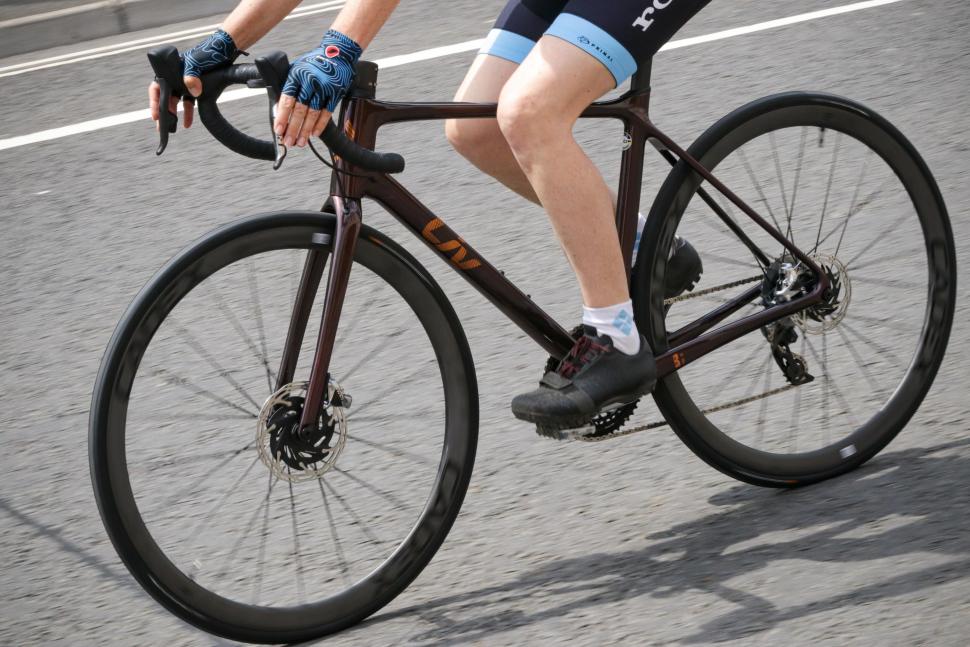
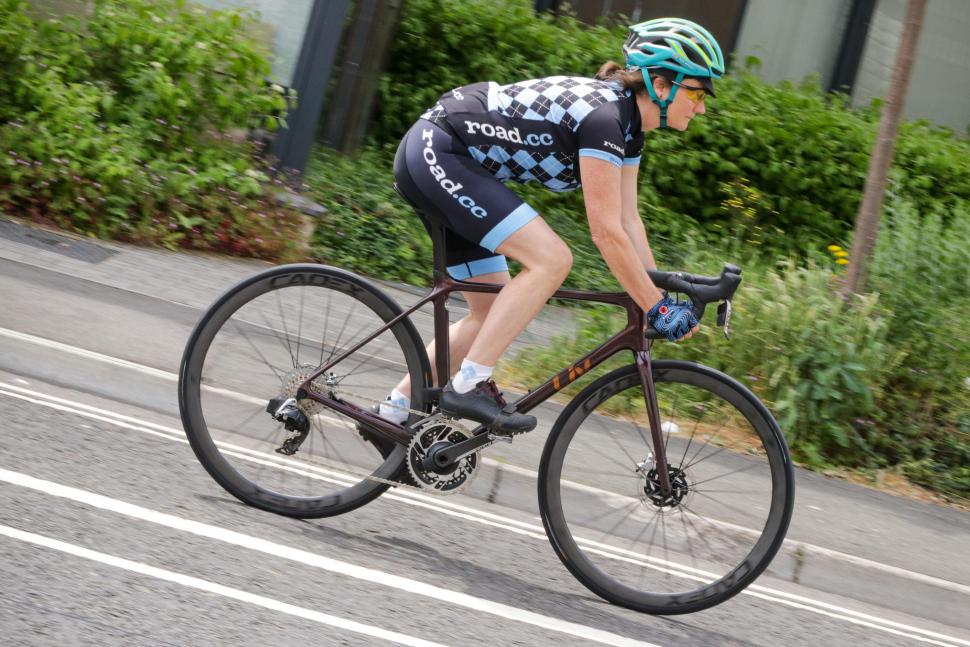
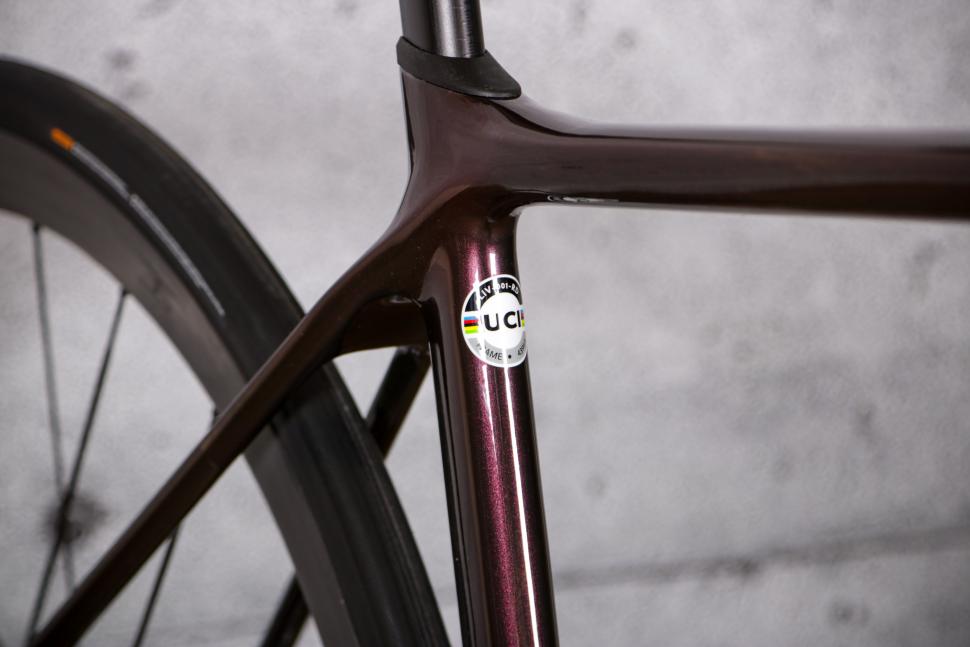











































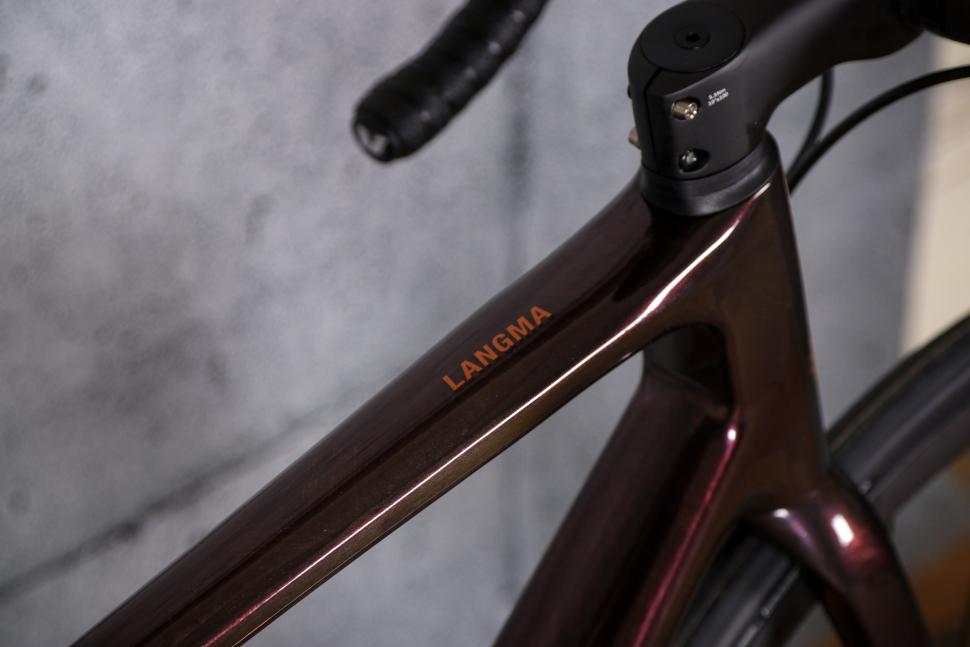
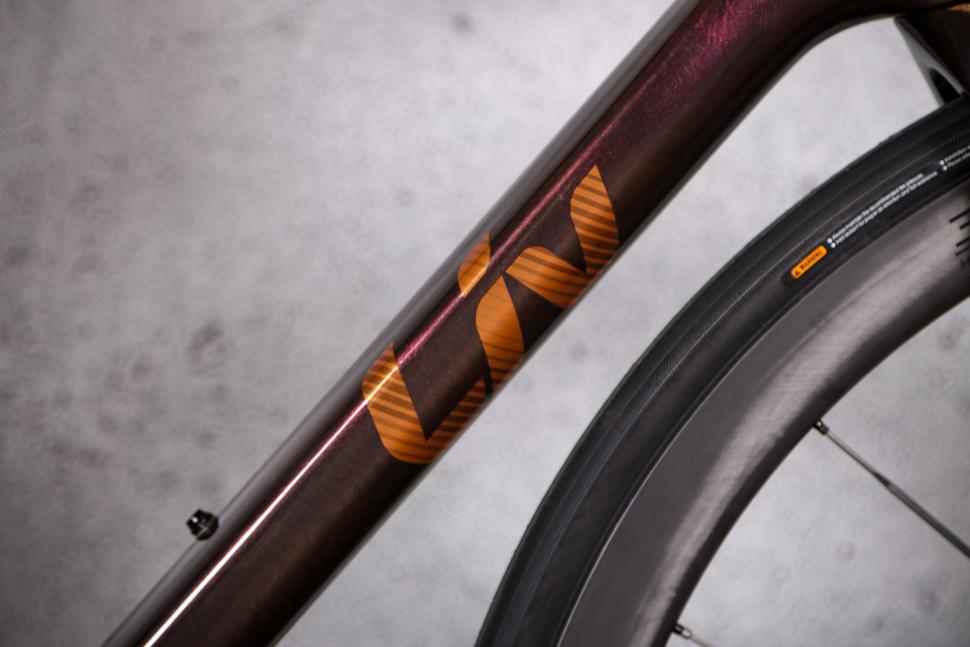

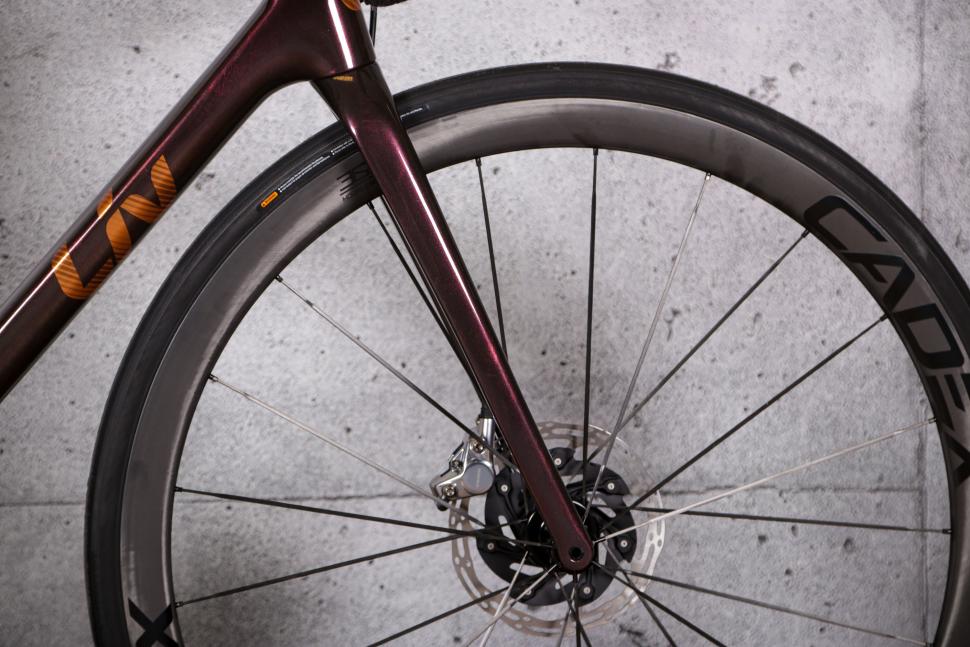
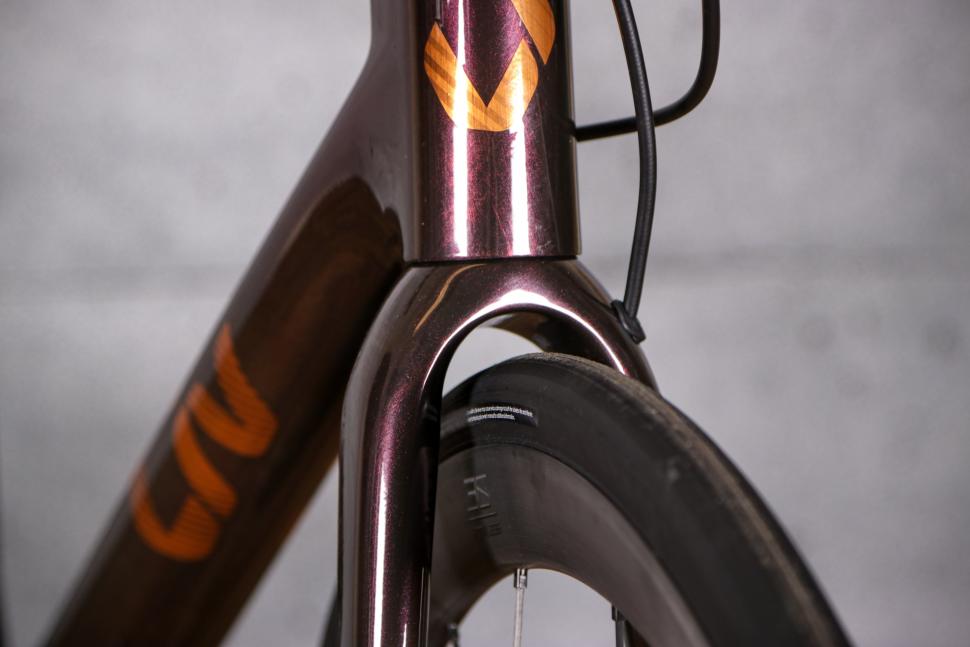
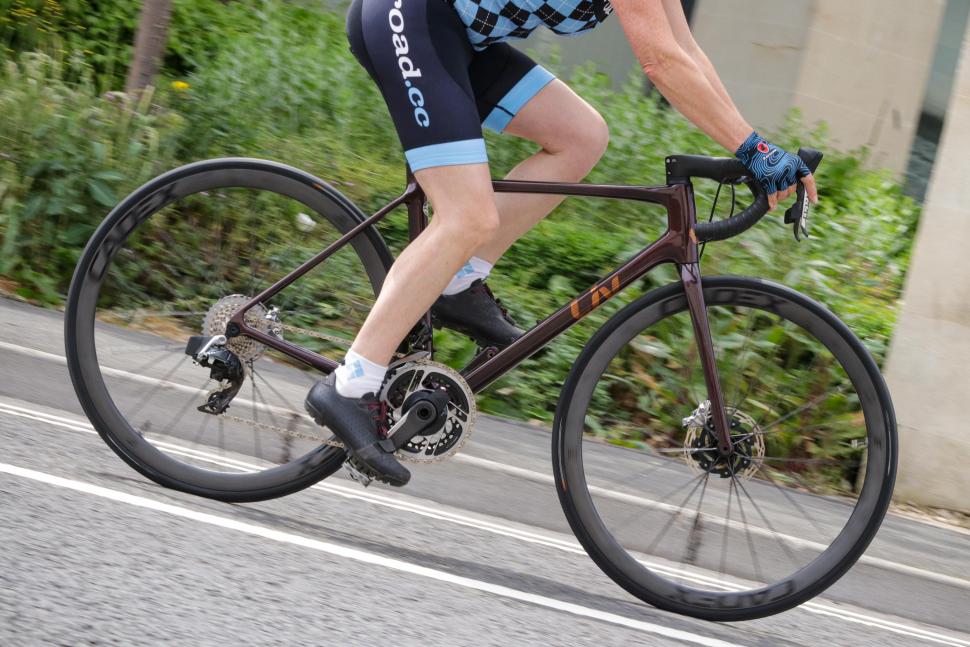
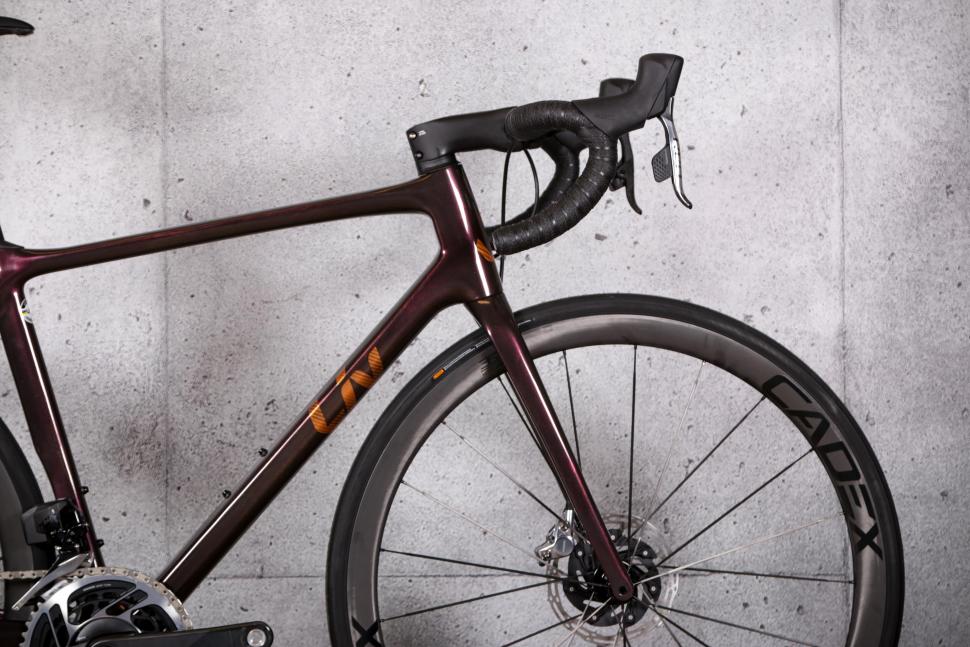
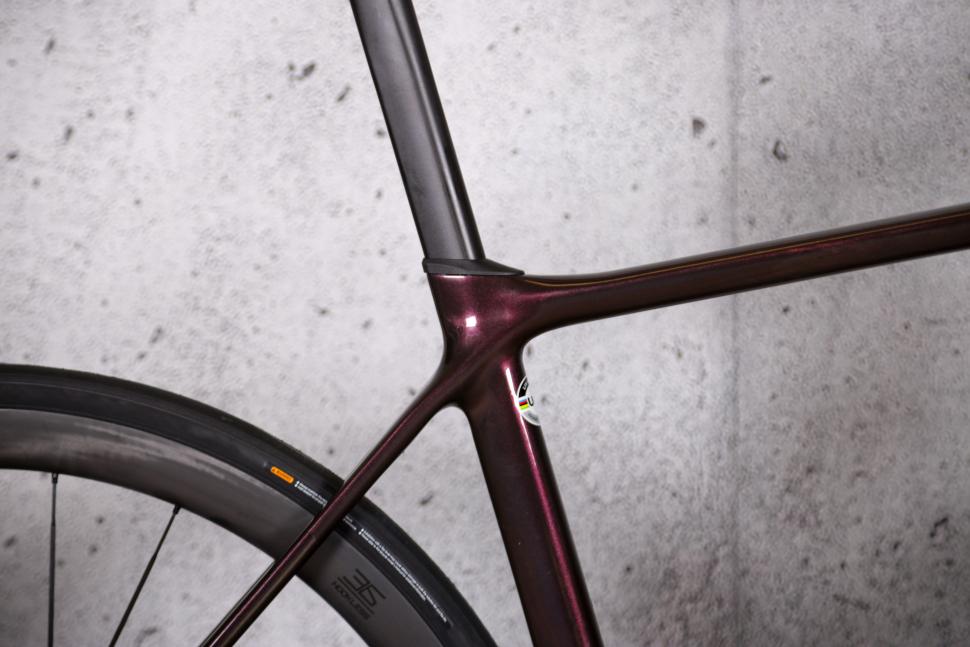
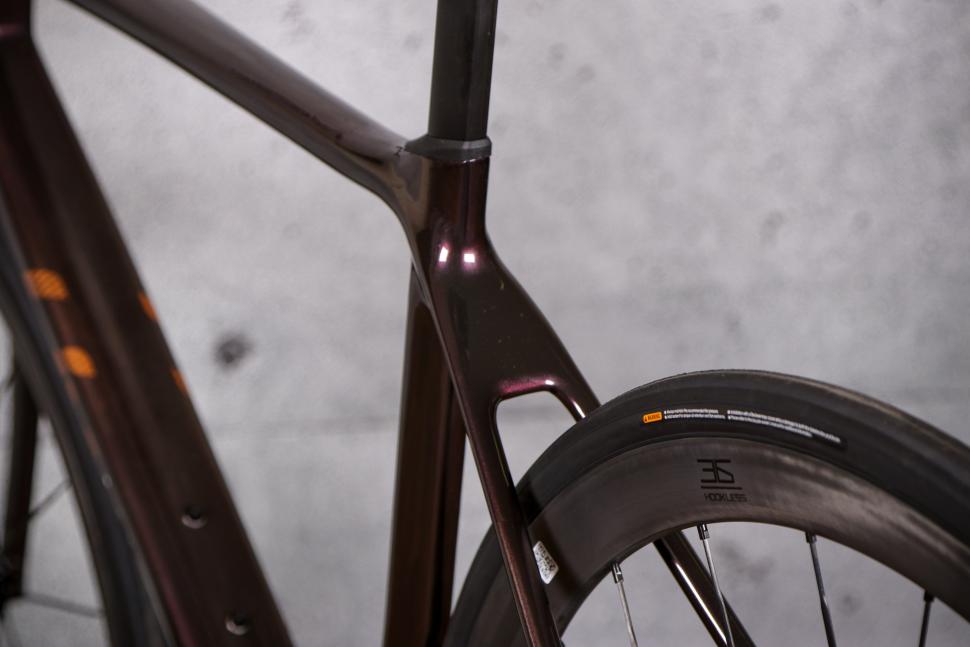

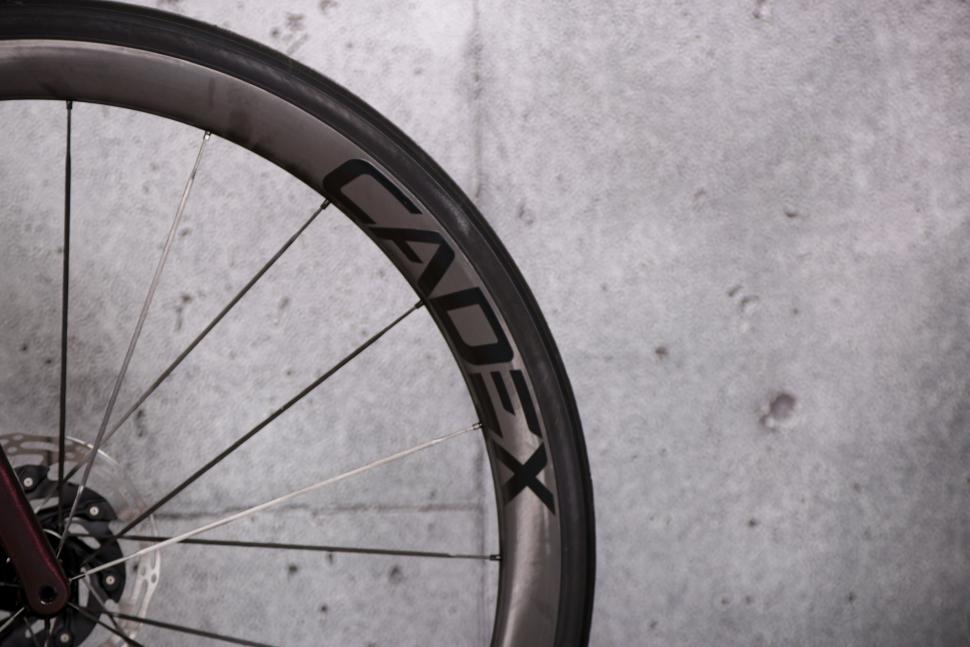
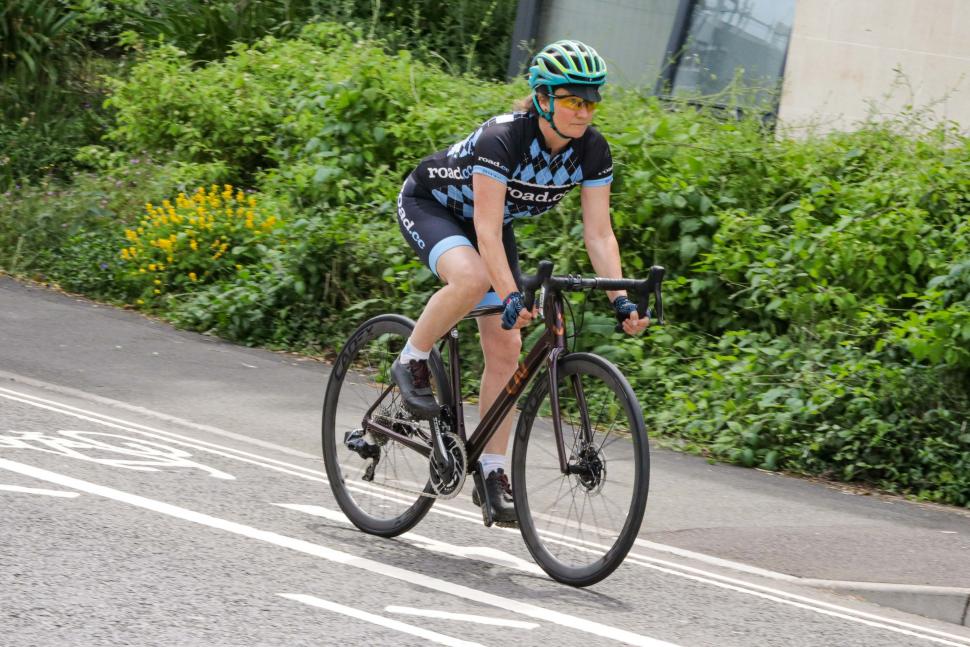



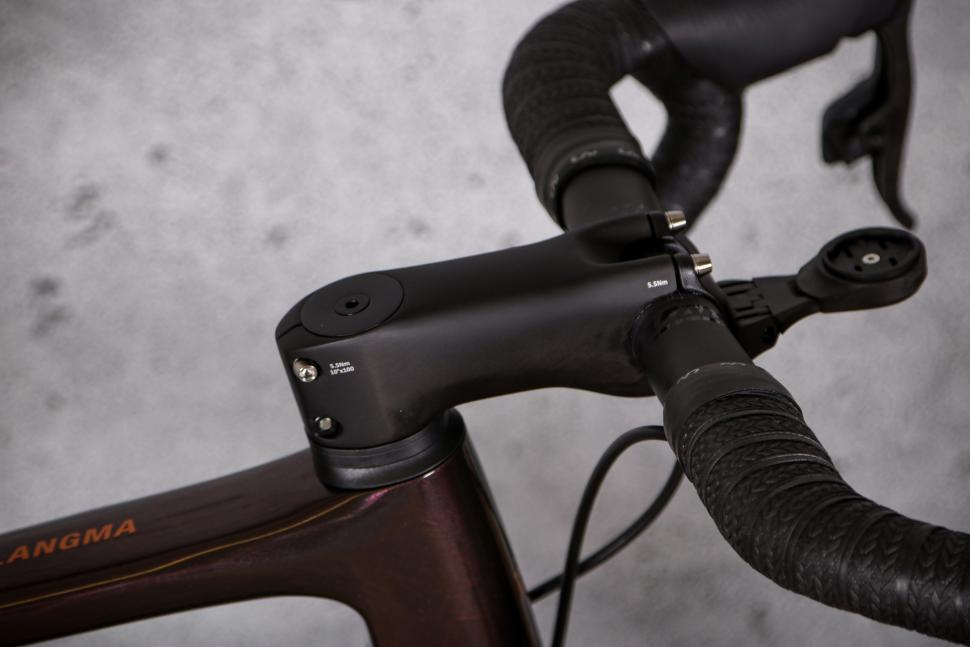
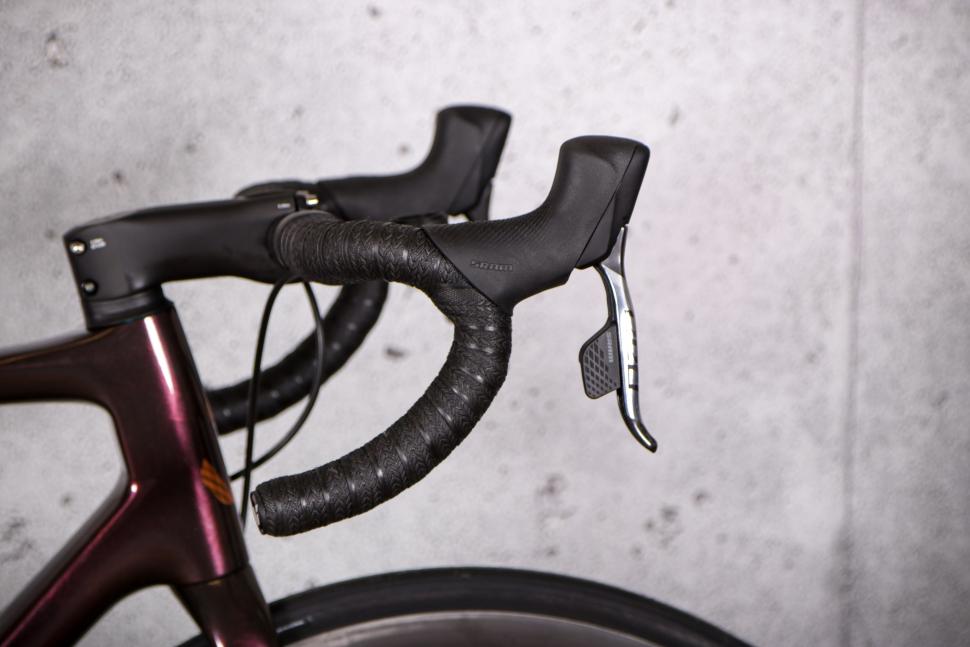
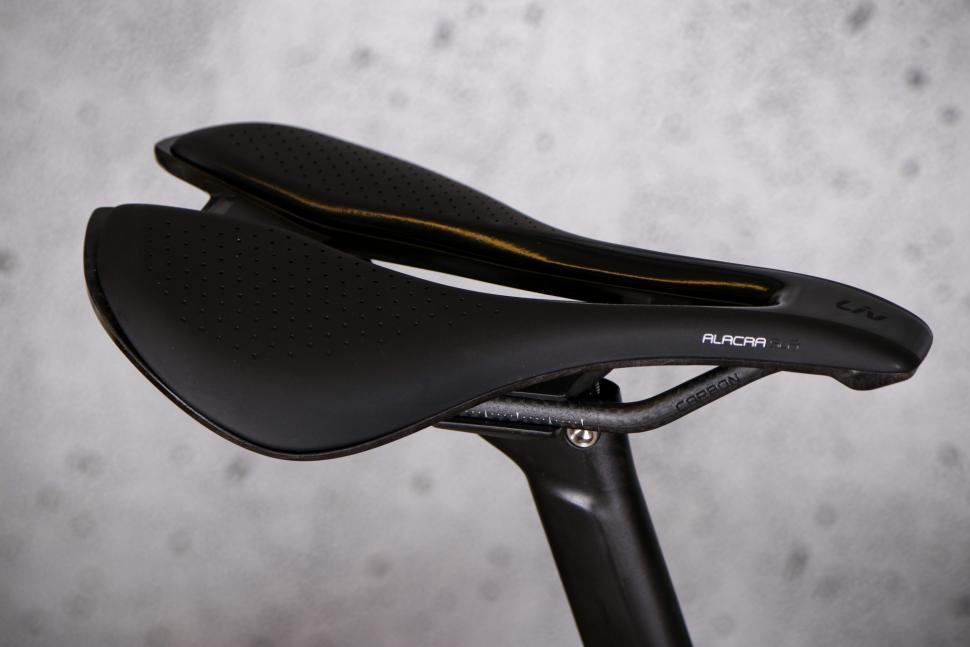

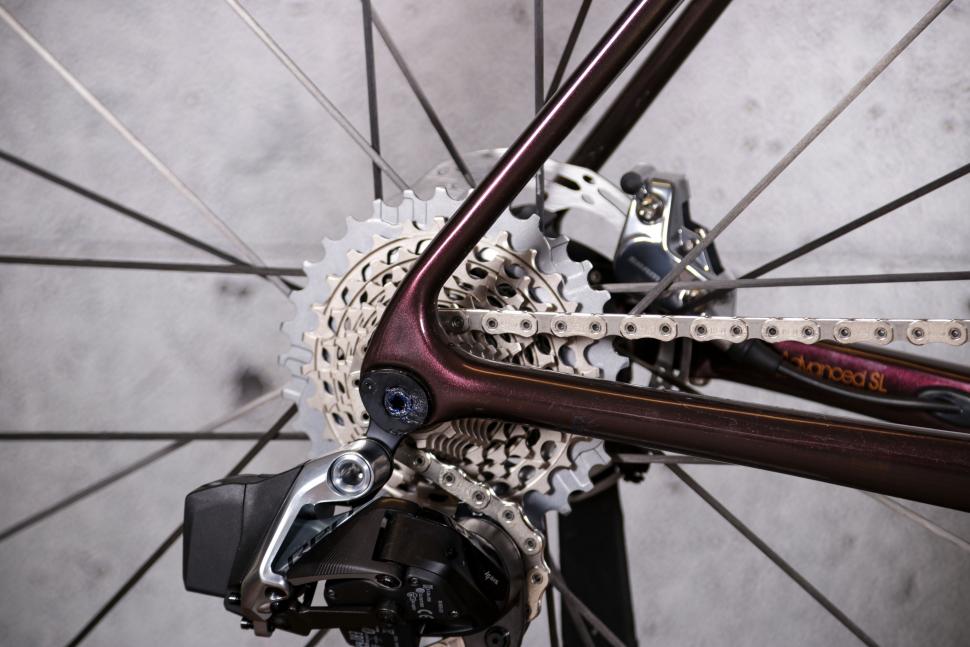



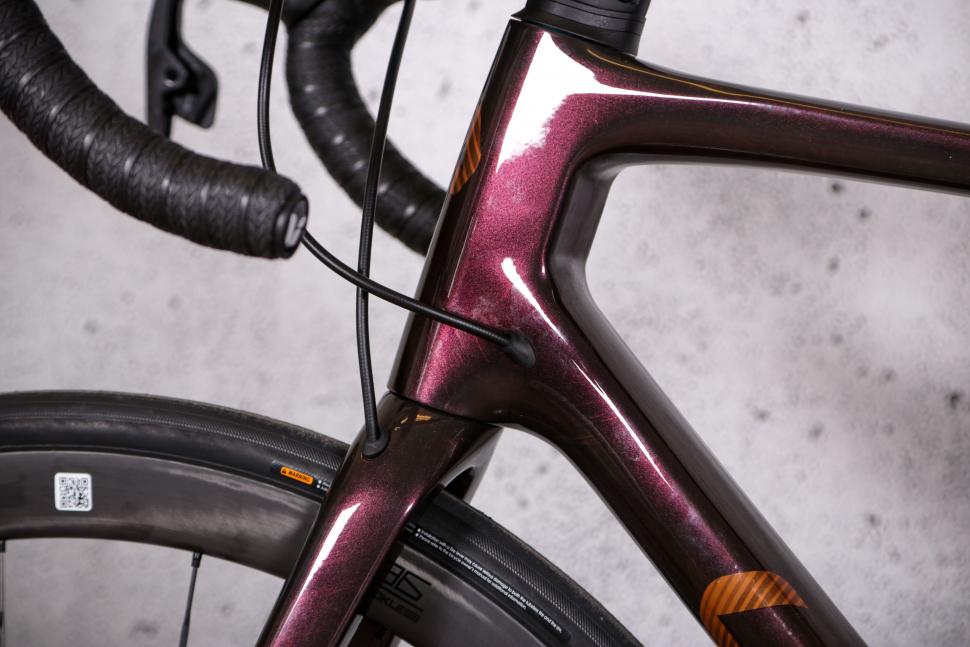




Add new comment
1 comments
Surprising to see exposed cables on a 10 grand bike.